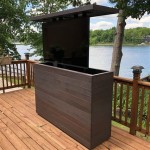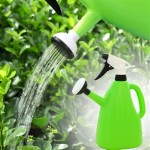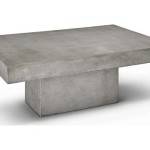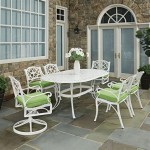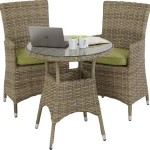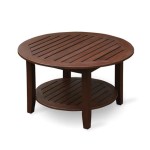Water Tank Solutions for the Ideal Outdoor Shower
Outdoor showers are becoming increasingly popular, offering a convenient and refreshing way to rinse off after swimming, gardening, or simply enjoying the outdoors. A crucial component of many outdoor shower setups, particularly those located away from direct plumbing lines, is a reliable water tank. Selecting the right water tank for an outdoor shower involves considering several factors, including capacity, material, heating options, and installation requirements. Understanding these considerations is essential for ensuring a comfortable and functional outdoor showering experience.
This article will explore various aspects of water tanks suitable for outdoor showers, providing a comprehensive guide to help homeowners choose the best option for their needs. We will delve into the types of tanks available, heating methods, installation considerations, and crucial maintenance practices. By examining these elements, readers can make informed decisions that optimize their outdoor shower's performance and longevity.
Types of Water Tanks for Outdoor Showers
The market offers a diverse range of water tank options, each with unique characteristics that cater to different needs and preferences. The primary distinctions lie in the tank material, capacity, and intended application. Understanding these variations is the first step in selecting the most suitable tank for a particular outdoor shower setup.
Plastic water tanks are a common and practical choice for outdoor showers. Polyethylene, a durable and lightweight plastic, is frequently used in manufacturing these tanks. Polyethylene tanks are resistant to corrosion, making them well-suited for outdoor environments where exposure to moisture and the elements is unavoidable. Their lighter weight simplifies transport and installation compared to heavier alternatives like metal tanks. Plastic tanks are also often more affordable, making them a budget-friendly option for many homeowners. However, plastic tanks can be susceptible to degradation from prolonged exposure to UV radiation. To mitigate this, it's recommended to choose tanks made from UV-resistant polyethylene or to provide shading or cover for the tank.
Metal water tanks, typically constructed from stainless steel or galvanized steel, offer enhanced durability and longevity compared to plastic tanks. Stainless steel tanks are highly resistant to corrosion and rust, making them an excellent choice for harsh environments or areas with high humidity. Galvanized steel tanks are treated with a protective zinc coating to prevent rust, but this coating can eventually wear off over time, requiring periodic maintenance or replacement. Metal tanks are generally heavier and more expensive than plastic tanks, but their superior durability can justify the investment for those seeking a long-lasting solution. Proper installation is crucial to prevent galvanic corrosion, especially if the tank comes into contact with dissimilar metals.
Pressurized water tanks are designed to maintain a consistent water pressure for a more enjoyable shower experience. These tanks typically feature a bladder or diaphragm that separates the water from compressed air. As water enters the tank, it compresses the air, creating pressure that forces the water out when the shower valve is opened. Pressurized tanks can be particularly beneficial in areas with low water pressure or when the shower head is located far from the water source. They often require a pump to initially fill the tank and maintain the desired pressure. Careful consideration should be given to the pump's specifications to ensure it is compatible with the tank and meets the water flow requirements of the shower.
Non-pressurized water tanks rely on gravity to deliver water to the shower head. These tanks are typically installed at a higher elevation than the shower head to create sufficient water pressure. While simpler and less expensive than pressurized systems, non-pressurized tanks may not provide the same level of water pressure, especially in areas with limited elevation differences. They are best suited for situations where a gentle, consistent flow of water is sufficient and where the tank can be readily placed at a higher level. The tank's capacity should be carefully chosen to accommodate the desired shower duration and frequency.
Choosing the correct tank size is paramount. Smaller tanks might quickly run out of water, while overly large tanks can occupy unnecessary space and require longer periods to heat up. Determining water usage habits, including the number of users and the average shower duration, will inform the ideal tank capacity. A typical shower uses approximately 2 to 3 gallons of water per minute. Therefore, a 40-gallon tank would provide roughly 13 to 20 minutes of shower time. It's always prudent to err on the side of a larger tank, especially if multiple users will be sharing the shower.
Heating Options for Outdoor Shower Water Tanks
One of the primary considerations when selecting a water tank for an outdoor shower is how the water will be heated. Numerous methods exist, each with advantages and disadvantages regarding cost, efficiency, and environmental impact.
Solar water heating is an environmentally friendly and cost-effective option, particularly in sunny climates. Solar water heaters utilize solar collectors to absorb sunlight and transfer the heat to the water in the tank. These systems can be passive, relying on natural convection to circulate the water, or active, utilizing a pump to force circulation. Passive systems are simpler and less expensive but may not be as efficient as active systems. Active systems require electricity to power the pump, adding to the overall cost but providing more consistent and reliable heating. Solar water heaters are best suited for areas with ample sunlight, as their performance is directly affected by weather conditions. The size of the solar collector should be appropriately matched to the tank's capacity and the desired water temperature.
Electric water heaters offer a convenient and reliable way to heat water for an outdoor shower. These heaters use electric resistance coils to heat the water directly, providing hot water on demand. Electric heaters are available in various sizes and power ratings, allowing homeowners to choose a model that meets their specific needs. They are relatively easy to install and maintain, but they can be more expensive to operate than solar water heaters, especially in areas with high electricity rates. It's crucial to ensure that the electrical system is properly grounded and that the heater is installed according to local codes and regulations. Tankless electric water heaters, which heat water only when needed, can be a more energy-efficient option than traditional tank-style heaters.
Propane or natural gas water heaters provide a powerful and efficient way to heat water quickly. These heaters use a gas burner to heat the water, offering a higher heating capacity than electric heaters. Propane heaters require a propane tank, which must be refilled periodically, while natural gas heaters are connected to a natural gas line. Gas water heaters can be more expensive to install than electric heaters, as they require gas piping and venting. However, they can be more cost-effective to operate in areas with low gas prices. Proper ventilation is crucial to prevent the buildup of carbon monoxide, a dangerous and odorless gas. Installation should be performed by a qualified professional to ensure safety and compliance with local codes.
On-demand water heaters, regardless of the energy source (electricity, propane, or natural gas), heat water only when it is needed, eliminating the need for a storage tank. This can result in significant energy savings, as there is no standby heat loss. On-demand heaters are compact and can be installed close to the shower, reducing the distance that hot water has to travel. They are particularly well-suited for outdoor showers that are used infrequently, as they avoid the energy waste associated with maintaining a tank of hot water. However, on-demand heaters may require a higher initial investment and may not be suitable for households with high hot water demands.
Immersion heaters are a simple and inexpensive option for heating water in a tank. These heaters consist of a heating element that is submerged directly into the water. Immersion heaters are easy to install and can be used with a variety of tank types. However, they are generally less efficient than other heating methods and may take longer to heat the water. They also require a reliable power source and careful monitoring to prevent overheating or electrical hazards. Immersion heaters are best suited for small tanks or situations where a quick and temporary heating solution is needed.
Installation and Maintenance of Outdoor Shower Water Tanks
Proper installation and regular maintenance are essential for ensuring the safe and efficient operation of an outdoor shower water tank. Following the manufacturer's instructions and adhering to local codes and regulations are paramount.
Site selection plays a crucial role in the performance and longevity of the water tank. The tank should be placed on a level surface that can support its weight when full. It should also be protected from direct sunlight, which can damage plastic tanks and cause excessive heat buildup in metal tanks. Providing shade or covering the tank can help to extend its lifespan. The location should also be easily accessible for maintenance and repairs. Adequate drainage is essential to prevent water from pooling around the base of the tank, which can lead to corrosion or other damage. Consider the proximity to the showering area and the hot water source to minimize heat loss in the pipes.
Plumbing connections must be made securely and properly to prevent leaks. Use Teflon tape or pipe sealant on all threaded connections. Ensure that the pipes are adequately insulated to minimize heat loss, especially in cold climates. Consider using flexible pipes to allow for movement and prevent damage from freezing temperatures. A pressure relief valve should be installed to prevent excessive pressure buildup in the tank, which can lead to bursting. A shut-off valve should also be installed to allow for easy isolation of the tank for maintenance or repairs.
Electrical wiring should be performed by a qualified electrician to ensure safety and compliance with local codes. Use weatherproof wiring and connectors to protect against the elements. Ensure that the electrical system is properly grounded to prevent electrical shocks. Install a ground fault circuit interrupter (GFCI) outlet to protect against electrical hazards. Regularly inspect the wiring for signs of damage or deterioration. Turn off the power to the tank before performing any electrical work.
Regular cleaning and inspection of the water tank are essential for maintaining its performance and preventing the buildup of sediment or bacteria. Drain the tank periodically to remove any accumulated debris. Inspect the tank for signs of corrosion, leaks, or damage. Clean the tank with a mild detergent and rinse thoroughly. Consider using a water filter to remove sediment and impurities from the water supply. Regularly inspect the heating element for signs of scaling or corrosion. Replace the heating element if necessary. Also, inspecting the water quality is crucial, especially if using well water. A water test can reveal the presence of contaminants like bacteria or heavy metals and can help determine the appropriate filtration or treatment methods.
Winterization is essential in cold climates to prevent the tank from freezing and bursting. Drain the tank completely before the onset of freezing temperatures. Insulate the tank and pipes to protect against frost damage. Consider using heat tape to prevent the pipes from freezing. If the tank cannot be drained and insulated, consider using a tank heater to keep the water from freezing. Disconnect any electrical components to prevent damage from power surges. Label all shut-off valves and drain valves clearly to avoid confusion. Following these steps will protect the water tank and ensure that the outdoor shower is ready for use in the spring.

Hot Outdoor Shower Made Easy Sunrinse Showers

27 Outdoor Shower Ideas In 2025 Bathrooms Bathroom Design

48 Fresh Outdoor Shower Ideas

Off The Grid Outdoor Shower Build Ibc Water Totes Youtube

Solar Shower Blues Resilience

53 Outdoor Shower Ideas Bathrooms

See An Outdoor Bathroom Made From A Water Tank Eclectic San Francisco By Shannon Malone Houzz

Ibc Off Grid Outdoor Shower Hipcamp And House Build

Everything You Need To Know About Outdoor Shower Enclosures Dengarden

See An Outdoor Bathroom Made From A Water Tank Eclectic San Francisco By Shannon Malone Houzz Ie

